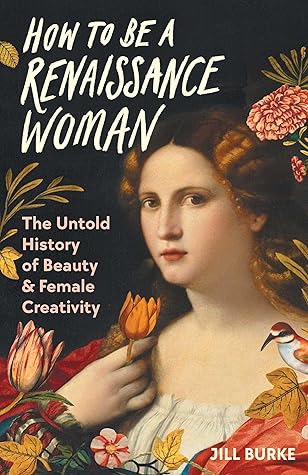More on this book
Community
Kindle Notes & Highlights
by
Jill Burke
Read between
January 28 - February 29, 2024
The more hair on show, it seems, the more sexually available you were deemed to be. Although hair-covering today is often associated with Islamic cultures, injunctions against women showing their hair are common in pre-modern Christian Europe. St
hairstyles. In 1480, for example the Venetian Council of Ten outlawed a fashionable haircut called the ‘fungus’ or mushroom, ‘which hides the forehead’. A high, broad and unblemished forehead was a key asset for a beautiful woman, so this adaptation of a fringe was considered to make the bearer seem indecently masculine. The husband, father or brother of these women would be forced to pay 100 ducats; to get an idea of the vastness of this fine, consider that a manual labourer was paid around 3 ducats a month.30 Given
Renaissance women knew that some of their cosmetic ingredients were poisonous, but used them anyway.
In his 1592 book on law, Marco Scarsella explains that because the union of marriage makes two bodies one, when a husband beats his wife he is in fact beating his own flesh, which needs to be corrected ‘lightly’.24
The woman at the centre of the poisoning network was Giovanna de Grandis. Her main income was as a cavamacchia, someone who removed stains from clothes. Giovanna was friends with a Sicilian widow called Girolama Spana who had learnt the recipes for the poison from her stepmother. Women of this kind often show up in the criminal archives, either widowed or simply abandoned by their husbands, often with children in tow; they were poor and skirted on the edge of destitution. They worked as laundresses, sellers of ‘secrets’ – cosmetics, love charms, magic – or as procurers for younger women. Aqua
...more
Excluded from formal education in medicine or botany, Renaissance women created informal networks of learning and observation that allowed them to engage with practical science.3 Recent research has revealed an astonishing amount of scientific knowledge inherent in medical and cosmetic remedy texts written by women or based on their recipes – not just knowledge about the properties of ingredients (what plants, minerals, animal products are efficacious), but about chemical processes as well. For many women in the sixteenth and seventeenth centuries, this was standard domestic wisdom. These
...more
While nowadays we might keep collections of favourite food recipes, in the Renaissance it was also common to keep recipes for medicine and hygiene products.
Many Renaissance cosmetics were referred to as ‘waters’ – this included both water-based products, made through distillation, steeping (like tea) or boiling (‘decoction’), and alcohol-based products typically (in Italy) using wine. Renaissance beauty ‘waters’ weren’t necessarily based just on water, but they all had the same flowing, light quality.
1 tablespoon dried lavender 1 tablespoon dried rose petals ½ tablespoon dried sage A pinch of salt Place all the ingredients in a small saucepan and add 500 ml of water. Bring to the boil, then lower the heat and simmer for around 15 minutes. A lid loosely perched on top will allow the steam to go back into the pan. Strain into a bowl using a fine sieve. Once cold, pour into a clean jam jar or bottle, and use with a sponge in the shower to scent your body after washing.
Oils – which usually consisted of scented plant material steeped in a neutral plant oil (normally olive in Italian recipes) – are, alongside waters, the basic building blocks of Renaissance cosmetics.


